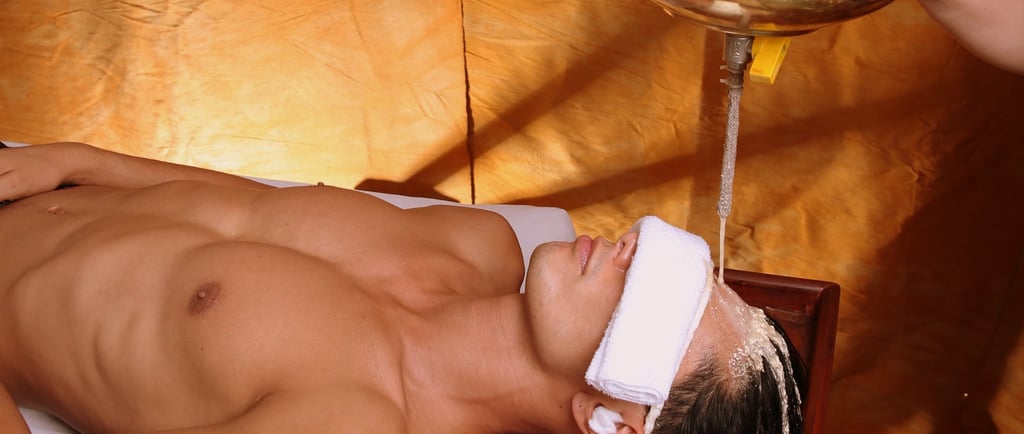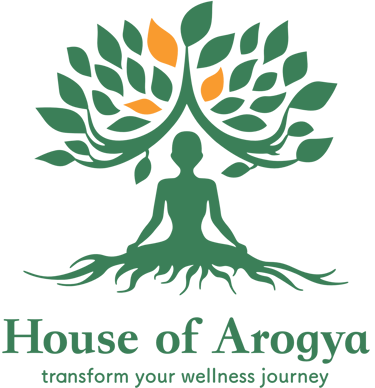Ksheeradhara: What Is It, What Happens During It, and Its Key Benefits
Discover Ksheeradhara — the Ayurvedic medicated milk pour therapy. Learn what it is, how it’s done, its benefits (cooling, stress relief, skin, nerves), and when it’s indicated or avoided.


What is Ksheeradhara?
Ksheeradhara is an Ayurvedic therapy in which warm medicated milk is poured continuously in a stream (often over the forehead or body).
The term ksheera means milk and dhara means flow/stream. In classical usage, Ksheeradhara is considered a variant under the Shirodhara family of pouring therapies, distinguished by its use of medicated milk instead of oil or buttermilk. It may be applied just to the head (Shiro Ksheeradhara) or across larger portions of the body (Sarvanga or body Ksheeradhara) depending on indication. Because milk is nourishing, soothing, and cooling, the therapy is often prescribed where excess heat (Pitta) or nerve stress is involved.
What happens during a Ksheeradhara session?
During a Ksheeradhara session, medicated milk is warmed, poured in a steady stream over the forehead or body, and allowed to rest for absorption.
After a preparatory consultation and assessment, herbs suited to the person’s constitution and imbalance are infused into the milk. You lie supine on a treatment table; if head-only, only the forehead region is exposed, otherwise body regions are draped for pouring. The vessel (dhara pot) is positioned above the forehead or body area, and the medicated milk is poured in a rhythmic, controlled stream for a specified period (often 30–60 minutes).
In full-body (Sarvanga) versions, multiple therapists may pour simultaneously while assistants reheat and recycle the milk as needed. At the end of the pouring, you rest to allow absorption, and the scalp or body is gently cleansed or dried. In some protocols, a pre-massage or oil application may be done prior to the milk pour to support penetration and protect the skin.
What are the benefits of Ksheeradhara?
Ksheeradhara offers cooling, nourishment, nervous-system relaxation, skin support, and thermoregulatory balance.
Relieves stress, mental tension, and calms the mind.
The rhythmic pouring of warm medicated milk soothes forehead marma points and shifts the system toward parasympathetic relaxation.
Improves sleep and treats insomnia.
Many reports note deeper, more restful sleep after Ksheeradhara, likely due to nerve calming and reduced mental agitation.
Balances internal heat and pacifies Pitta.
Because milk is naturally cooling and herbs are chosen to reduce internal heat, Ksheeradhara is useful in Pitta-excess or heat-sensitive states.
Nourishes scalp, brain tissues, and skin.
The milk medium with herbs provides nourishment, supports scalp health, softens hair, improves scalp circulation, and benefits complexion.
Helps with headaches, irritability, and neurological stress.
It’s often prescribed for headache, mental irritability, or nerve overactivity.
Supports detox and homeostasis.
Through cooling and soothing actions, Ksheeradhara may assist in clearing internal heat and rebalancing mind–body homeostasis.
Adjunct for blood pressure and emotional balance.
Some practitioners use it as a calming adjunct in hypertension and mood regulation.
What are the contraindications or cautions for Ksheeradhara?
Ksheeradhara should be avoided or modified in certain cases:
During fever, acute infections, or systemic illness.
In cold, congestive, or excessive-mucus conditions (because milk is heavy).
In dairy allergies, lactose intolerance, or sensitivity to medicinal herbs used in the milk.
During pregnancy (especially early) unless adapted by a practitioner.
In skin infections, open wounds, or scalp irritation in the treatment area.
In Kapha-dominant disorders where extra moisture/heaviness is not advisable.
In extreme weakness or debility— the body may not handle the therapy well.
With uncontrolled chronic diseases unless medically cleared.
Always perform Ksheeradhara under a qualified Ayurvedic practitioner, especially when comorbidities exist.
How often and for how long should Ksheeradhara be done?
Session length and frequency depend on constitution, imbalance, and therapeutic goals.
A typical session lasts 30 to 60 minutes (often ~45 minutes). Courses frequently run daily for 7–14 days or longer for chronic conditions. After an initial course, maintenance sessions can be scheduled periodically. For head-only (Shiro Ksheeradhara), fewer or shorter sessions may suffice; for full-body (Sarvanga), longer or more sessions may be applied. Time of day is chosen when the mind is calm—avoid just before exertion. In hotter climates, its cooling effect can make it particularly useful during warm or Pitta seasons.
How is the medicated milk prepared for Ksheeradhara?
A base of fresh milk is used (cow’s or other, preferably unprocessed). Herbs are selected for cooling, calming, and nervous-system support (e.g., Brahmi, Usheera) and infused into the milk. The milk–herb infusion is gently heated to the desired temperature, filtered to remove herb residues, cooled or held warm for application, and poured in a controlled steady stream. In full-body versions, milk may be recirculated or reheated by assistants to maintain temperature. Temperature and herb selection are critical—too hot or incompatible herbs can aggravate conditions.
Why is Ksheeradhara relevant for people in the Philippines, and how to integrate it with other therapies?
In tropical climates like the Philippines, internal heat (Pitta) and mental stress from sensory overload, screen time, urban heat, and irritability are common. Ksheeradhara’s cooling, soothing, and nourishing effects address these patterns directly. Pair Ksheeradhara with Abhyanga (oil massage) or Takradhara (buttermilk pour) to offer a full spectrum of pour therapies. Content-wise, you can interlink articles such as “Ksheeradhara vs Shirodhara vs Takradhara: when to choose which pour therapy” to build topical authority.
FAQ on Ksheeradhara
Q: How is Ksheeradhara different from Shirodhara?
A: The main difference is the liquid: Shirodhara typically uses medicated oils or decoctions; Ksheeradhara uses warm medicated milk. Ksheeradhara is more nourishing and cooling.
Q: Is Ksheeradhara similar to Takradhara?
A: Both are pouring therapies, but Ksheeradhara uses milk while Takradhara uses buttermilk. Their cooling properties and indications differ based on constitution and condition.
Q: How many sessions are optimal?
A: It depends, but many protocols use daily sessions for 7–14 days; chronic cases may require more.
Q: Will Ksheeradhara help with skin/hair problems?
A: It can help nourish the scalp and skin, improve circulation, and soothe heat-related irritations when properly tailored.
Q: Can I do Ksheeradhara if I’m lactose intolerant?
A: Standard Ksheeradhara is not recommended for those with milk allergies or intolerance; practitioners may adapt or choose alternate therapies.
Conclusion & Call to Action
Ksheeradhara is a soothing, nourishing, cooling Ayurvedic pour therapy using medicated milk to harmonize the nervous system, reduce internal heat, support scalp and brain tissues, and promote mental calm and restorative sleep.


